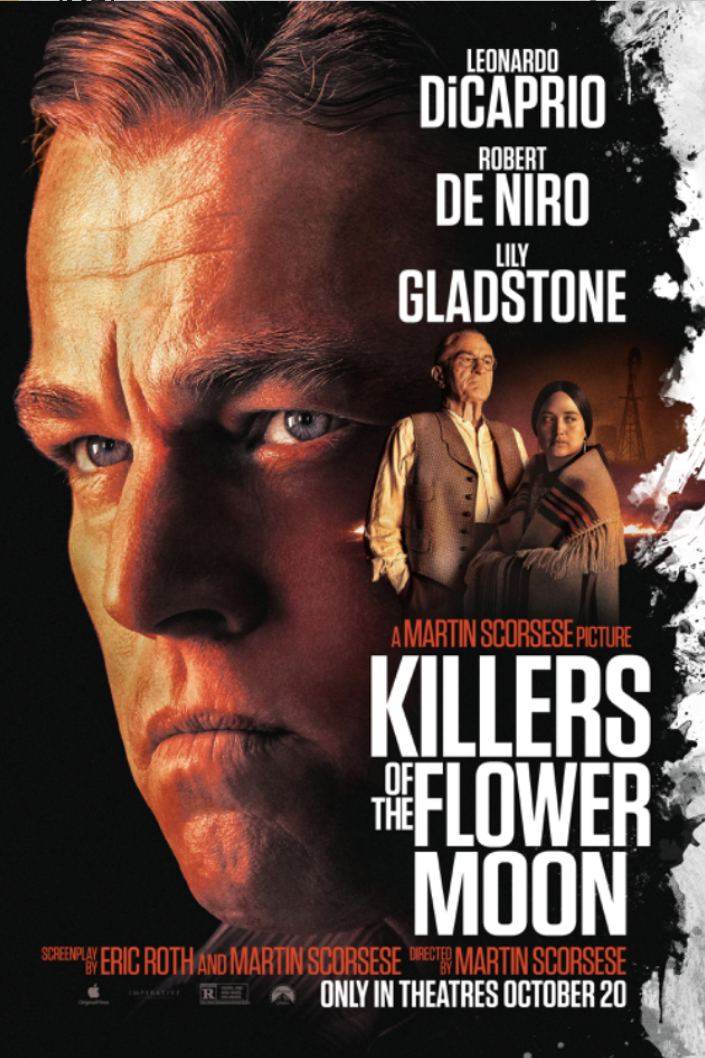The mystery and suspicious history of the FBI’s first director, J. Edgar Hoover, had a life that seemed perfect in the hands of the dark and meticulous film director, Clint Eastwood. The combination was projected to be harmonious, but when J. Edgar premiered in all theaters on November 11, it proved to be anything but.
J. Edgar Hoover was the legendary man that created the Federal Bureau of Investigation and remained the extensively feared director for almost five decades with unsurpassed power. In his life he was in a constant war with radicals, Communists, gangsters, and many politicians that tried to cease his success.
The movie is a chronicle of Hoover’s long life in power, but was acted upon with sloppy writing by Dustin Lance Black’s (Milk) constantly changing flashbacks depicted by J. Edgar (perfectly played by Leonardo DiCaprio) telling numerous biographers about his ladder to success. J. Edgar starts with him realizing his beliefs against radicals and acting upon them promptly, but narrating the story is a decrepit DiCaprio behind miles of waxy makeup. The flashbacks would have been a nice touch to the memoir of J. Edgar, but they were jumbled and out of place, leaving nothing but confusion.
Hooverfinally puts himself in power and finds his second in command, Clyde Tolson (Armie Hammer) and lifelong loyal secretary, Helen Gandy (Naomi Watts) and officially starts the FBI. Eastwood and Black focus the majority of the movie onHoover’s involvement in the Lindbergh kidnapping case of 1932 and his relationship with others. The movie shows the personality of J. Edgar, which DiCaprio captures with precision, and his close relationship with his blunt and overbearing mother (Judi Dench) until her death. Black does well handling the Lindbergh case, but then only touches uponHoover’s opinions about Martin Luther King Jr. and caps his vast curiosity in JFK’s assassination through a one minute phone call.
Throughout the 137 minutes of the humdrum movie, Eastwood hints at J. Edgar’s potential closeted homosexuality, but then thrusts it upon the audience with a sudden intimate moment betweenHooverand his only friend Clyde Tolson. After this scene the movie always circles back toHoover’s sexuality with Leonardo DiCaprio cross dressing and subtle affectionate scenes with fellow actor Armie Hammer. The movie loses the fascinating aspects of the creation and depths of thought behind the FBI and Eastwood manages to turn J. Edgar into the director of the Federal Brokeback Bureau of Investigation. The turn that the movie takes is so disappointing that J. Edgar is both monumental, and terribly bleak.
J. Edgar does prove to have some favorable moments with the phenomenal acting by Leonardo DiCaprio and Armie Hammer. The way DiCaprio wholly captures J. Edgar shows that he genuinely loved the character and Armie Hammer also shows extraordinary talent with his believable portrayal of Clyde Tolson. During the intimate scenes, both actors displayed a possible connection with their characters without awkward moments. Another wise decision made in the making of J. Edgar is the cinematography. Eastwood shows the flashbacks with saturated color, sticking to the vibe and swag of the 1930’s. The cinematography in J. Edgar goes with its time and makes for a capturing picture.
J. Edgar could be seen as one of the most powerful men during his time because of the amounts of scandalous information he had on people for no reason other than to gain more success. The movie does a suitable job of outlining a history lesson of the legend’s life, but is so empty that it’s not interesting enough to be a blockbuster movie. J. Edgar does, however, show spectacular acting and is a dazzling period piece that illustrates the time J. Edgar was in power through its overawing cinematography and costume decisions. The historic account of J. Edgar is gripping, but when Eastwood and Black were done with it, the movie suffered under the grandness of J. Edgar’s life story.








